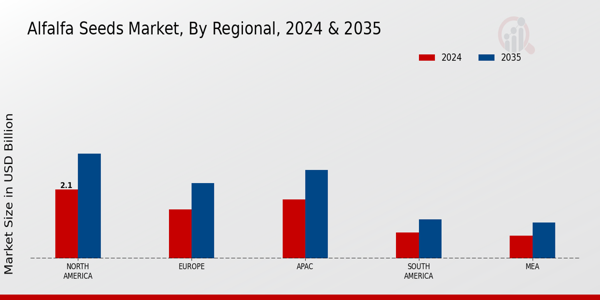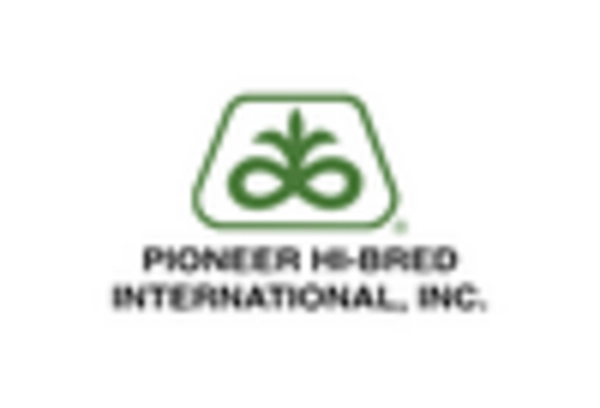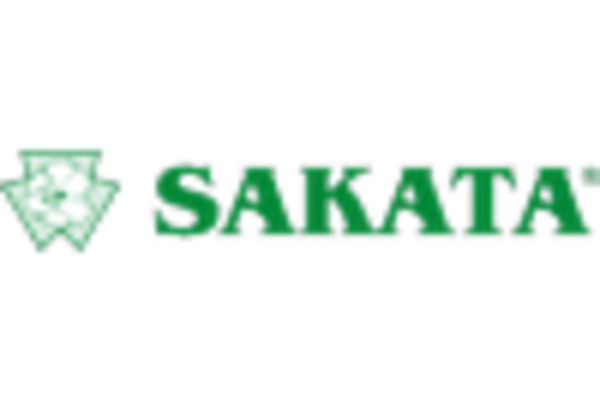Sustainable Livestock Feed Demand
The Alfalfa Seeds Market is experiencing a notable surge in demand for sustainable livestock feed. Alfalfa, recognized for its high protein content and digestibility, serves as a primary feed source for dairy and beef cattle. As livestock producers increasingly prioritize sustainable practices, the demand for alfalfa seeds is projected to rise. In recent years, the market for alfalfa hay has expanded, with estimates indicating a growth rate of approximately 4% annually. This trend is likely to continue as farmers seek to enhance the nutritional value of their feed while minimizing environmental impact. The Alfalfa Seeds Market is thus positioned to benefit from this shift towards sustainable livestock management, as producers look for reliable sources of high-quality feed.
Expansion of Organic Farming Practices
The Alfalfa Seeds Market is witnessing a significant shift towards organic farming practices. As consumers increasingly demand organic products, farmers are transitioning to organic methods, which often include the cultivation of alfalfa as a cover crop. Alfalfa enhances soil health and fertility, making it an attractive option for organic farmers. Recent statistics indicate that the organic alfalfa seed market is growing at an impressive rate of 7% per year, reflecting the broader trend of organic agriculture. This expansion not only supports sustainable farming practices but also aligns with consumer preferences for organic produce. Consequently, the Alfalfa Seeds Market is poised for growth as more farmers adopt organic methodologies.
Increasing Awareness of Nutritional Benefits
The Alfalfa Seeds Market is benefiting from a growing awareness of the nutritional advantages associated with alfalfa. Rich in vitamins, minerals, and antioxidants, alfalfa is increasingly recognized for its health benefits, not only for livestock but also for human consumption. The rise in health-conscious consumers has led to a surge in demand for alfalfa-based products, including supplements and health foods. Market data suggests that the alfalfa-based product segment is expected to grow at a rate of 6% annually, driven by this heightened awareness. As consumers seek natural and nutrient-dense food options, the Alfalfa Seeds Market is likely to expand, catering to both livestock and human nutritional needs.
Technological Innovations in Seed Production
Technological advancements in seed production are significantly influencing the Alfalfa Seeds Market. Innovations such as genetic modification and precision agriculture are enhancing seed quality and yield. For instance, the introduction of genetically engineered alfalfa varieties has led to improved resistance against pests and diseases, which is crucial for maintaining crop health. Furthermore, precision agriculture techniques allow for optimized planting and harvesting, resulting in higher productivity. The market is projected to witness a compound annual growth rate of around 5% as these technologies become more widely adopted. This evolution in seed production not only boosts the efficiency of alfalfa cultivation but also aligns with the growing demand for high-quality forage in the livestock sector.
Rising Global Population and Food Security Concerns
The Alfalfa Seeds Market is significantly influenced by the rising global population and the associated food security concerns. As the world population continues to grow, the demand for livestock products is expected to increase, necessitating a reliable supply of high-quality feed. Alfalfa, being a key forage crop, plays a crucial role in meeting these demands. Projections indicate that the global demand for animal protein will rise by 30% by 2030, thereby driving the need for alfalfa cultivation. This scenario presents a substantial opportunity for the Alfalfa Seeds Market, as farmers seek to enhance their production capabilities to ensure food security in the face of increasing population pressures.


















Leave a Comment